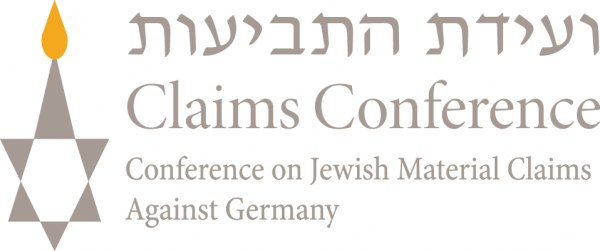Auschwitz Pavilion
A new permanent exhibition at the Auschwitz-Birkenau State Museum has updated decades-old information with a compelling format, placing the murder of more than 1 million Jews at the death camp in the larger context of the Holocaust. The Auschwitz Pavilion, created in the camp’s former Block 27, was designed and built by Yad Vashem and funded by the Israeli government with financial assistance from the Claims Conference.
This exhibition, called “Shoah,” brings the immediacy of sights, sounds, photographs and artwork to the more than 1.5 million people who visit Auschwitz-Birkenau annually. It was dedicated in June 2013 in a ceremony presided over by Israeli Prime Minister Benjamin Netanyahu and is the first update of the Jewish Pavilion since the 1960s.
The Auschwitz Pavilion galleries frame the story of the Holocaust beyond the horrors of Auschwitz-Birkenau, placing the murder of more than 1 million Jews at the notorious death camp into the larger context of the Nazis’ systematic attempt to exterminate the Jewish people.
The “Shoah” exhibition starts with a cinematic montage of Jewish life between the world wars, followed by a display on Nazi racist ideology. In the space depicting the attempted annihilation of the Jewish people, a map illustrates the vast geographic reach of all Nazi-era killing sites. This is followed by a focus on the human struggle to maintain dignity and life as the genocide was carried out in each of those places.
A heartrending room devoted to the 1.5 million murdered Jewish children is empty except for pencil replicas of childrens’ Shoah-era drawings etched directly onto the walls at childrens’ eye level. Israeli artist Michal Rovner sorted through 6,000 drawings by children who died in the Holocaust and selected fragments to copy onto the walls, without “correcting or improving them,” she said in an interview with Agence France-Presse. With the recordings of children speaking in the background, visitors see that the drawings are of houses, trains, soldiers, hangings – and flowers.
The exhibition closes with the stunning “Book of Names,” two meters high and 14 meters around, holding the names of 4.2 million victims that have been gathered by Yad Vashem. Empty pages at the end of the book stand ready to record additional names as they are found.
“Yad Vashem has done a remarkable job in presenting, in a most impressive and professional way, Shoah-related aspects; spectators are left with an unforgettable yet distinct full picture of the most terrible man-made premeditated catastrophe in human history, as endured by us as individuals, families, communities and a nation as a whole,” said Claims Conference Executive Committee Chairman Reuven Merhav, who attended the dedication ceremony.
The Claims Conference was instrumental in the 1953 founding of Yad Vashem and has supported the institution ever since. The new Jewish Pavilion expresses to visitors that Auschwitz was only one piece of the larger terror of the Holocaust. The new “Shoah” exhibition will educate, inform and help preserve the memory of the victims in the minds of millions of people, visiting from around the world, for decades to come.

